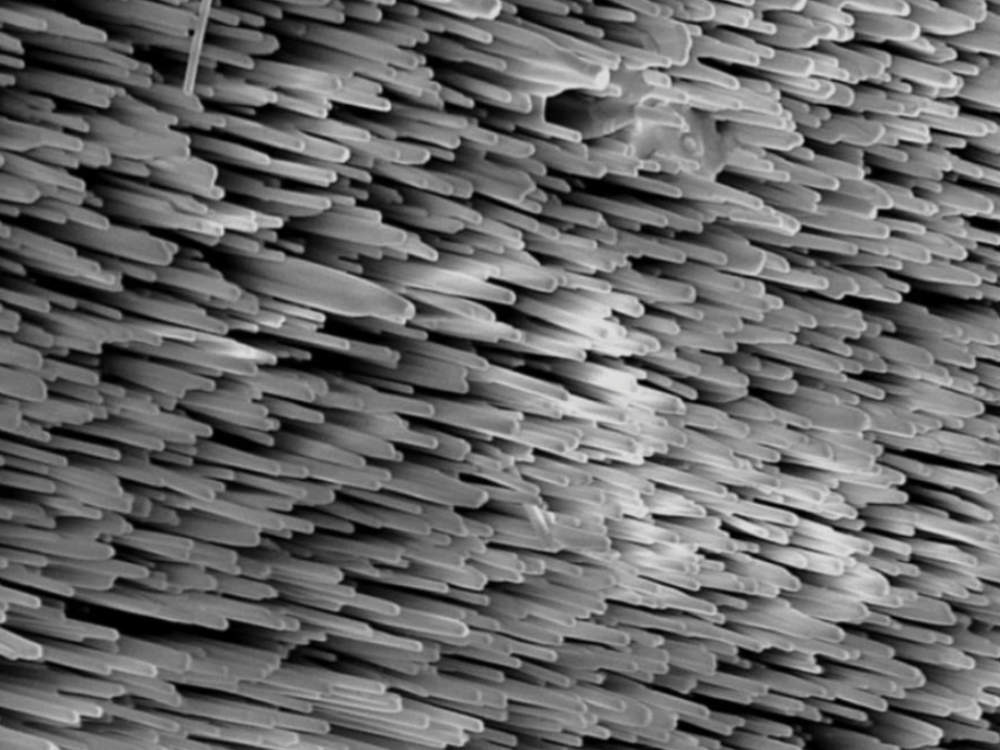GCM dusts off potentially lucrative research into topaz single-crystal mullite fibres

Green Critical Minerals is reviewing its previous research into producing single-crystal mullite fibre using topaz from its Torrington minerals project. Pic: Getty Images
- Green Critical Minerals restarting research into producing single-crystal mullite fibre using topaz
- High-end, non-oxide mullite fibres could sell for about US$11,000/kg into the growing metal matrix composites market
- Opportunity made possible by acquisition of VHD Blocks technology and appointment of Professor Andrew Ruy
Special Report: Green Critical Minerals is advancing its mine to market strategy after deciding to review its previous research into the production of single-crystal mullite fibre using topaz sourced from its Torrington project in NSW.
Between 2019 and 2020 the company conducted research into the production of topaz single-crystal mullite fibres, highly sought after for their high-temperature stability, low thermal expansion, and excellent mechanical strength for use in reinforcing metal and ceramic matrix composites.
This demonstrated the potential of mullite fibres in mining for high durability impact and wear pads, advanced brake pads and catalytic converters in the automotive sector, body, vehicle and aircraft armour in the military, and high temperature filtration systems for the chemical industry.
Research also highlighted the potential to use all of the fluorine by-product to develop a high-value niche product (fibres) and a large-volume, low-value product (fluoride used widely in water fluoridation).
However, further development was paused at that time due to resource constraints and the impact of the COVID 19 pandemic.
Torrington currently has an indicated and inferred resource of 4965t tungsten at a contained grade of 0.23% and 198,500t of topaz at a grade of 17% in the Wild Kate and Mount Everard prospects.

Back on board
Green Critical Minerals (ASX:GCM) now has the opportunity to dust off its previous research into advanced material technologies thanks to the recent acquisition of VHD Block technology and appointment of Professor Andrew Ruy – a globally renowned expert in oxide and non-oxide ceramics – as its head of research and development.
This new capability allows the company to review its previous research with an intention to define a pathway to commercialisation for its mullite fibre technology.
Efforts will be made to grow mullite whiskers into coarser fibres, potentially enhancing the reinforcement properties, as well as potentially studying factors like aluminium alloy types, mixing techniques, porosity, pore size distribution, calcining temperature, and infiltration parameters.
Success could lead to the development of a potentially disruptive beneficiation technology that will transform low-value topaz feedstock into high value single-crystal mullite fibres for use in metal matrix composites (MMCs) and ceramic matrix composites (CMCs).
This has the potential to be hugely lucrative as the high-end, non-oxide ceramic fibre can sell for about US$11,000/kg into the MMC market which has been experiencing steady growth, driven by increasing demand across various industries such as automotive, aerospace, and defence.
In 2023, the market was valued at ~US$810m and is projected to reach over US$2.2bn by 2032, a compound annual growth rate of ~12.4%.
GCM adds that as single-crystal mullite fibres have long been considered the holy grail of fibre reinforcements, but they are not available commercially, there are literally hundreds, if not thousands, of industrial and research laboratories that are potential customers.
Work program
The company will now develop a work program that considers the recommendations from previous research such as:
- Optimisation of fibre production by refining parameters such as porosity control, calcining temperatures, and infiltration techniques to achieve consistent and scalable production
- Exploration of metal and ceramic matrix composites to validate mullite fibre performance under real-world conditions
- Developing a pilot production facility to bridge the gap between laboratory-scale research and commercial-scale manufacturing
- Engaging with key industry players to identify priority applications and secure partnerships for product development and adoption; and
- Environmental impact studies to ensure sustainable practices in the extraction of topaz and production of mullite fibre, aligning with GCM’s environmental and social governance objective.
This article was developed in collaboration with Green Critical Minerals, a Stockhead advertiser at the time of publishing.
This article does not constitute financial product advice. You should consider obtaining independent advice before making any financial decisions.
Related Topics

UNLOCK INSIGHTS
Discover the untold stories of emerging ASX stocks.
Daily news and expert analysis, it's free to subscribe.
By proceeding, you confirm you understand that we handle personal information in accordance with our Privacy Policy.








